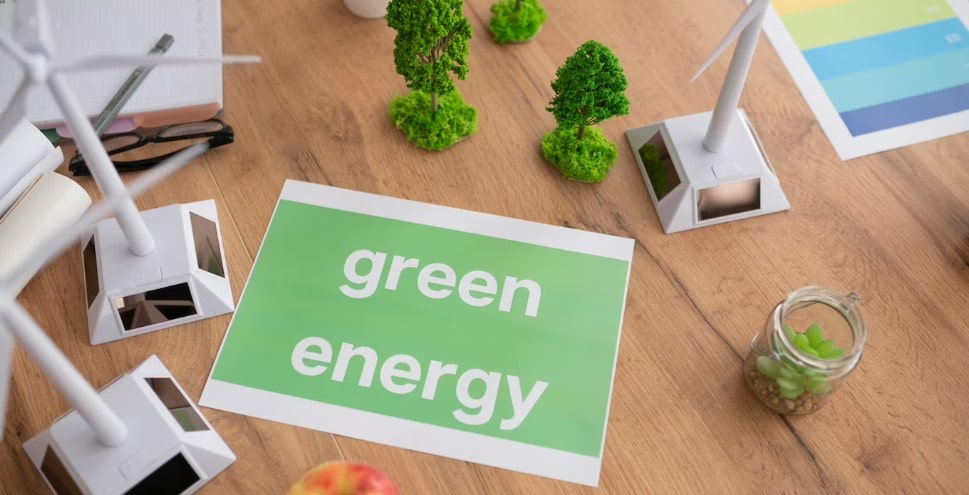Energy efficiency is an important concept that involves reducing energy consumption while still meeting our needs. With rising energy costs and concerns about climate change, making your home more energy-efficient is not only a smart financial decision, but it’s also an environmentally responsible one.
In this article, we’ll explore the benefits of energy efficiency and offer practical tips for making your home more efficient. By implementing these tips, you can save money on your energy bills, reduce your carbon footprint, and enjoy a more comfortable and healthy living environment.
Whether you’re a homeowner or a renter, it’s important to understand the value of energy efficiency and the positive impact it can have on your home and the planet. So, let’s get started!
I. Conduct an energy audit
- Identify problem areas: Walk through your home and look for areas where energy may be escaping. Check for drafts around windows and doors, as well as any areas where insulation may be insufficient. You can use a candle or an incense stick to detect drafts. Move the flame or stick around the edges of windows and doors to see if the smoke is blown or sucked in, which indicates a draft. You can also use a thermal leak detector to identify areas where insulation is insufficient. These devices measure the temperature of surfaces and can help you detect temperature differences where insulation is missing or inadequate.
- Inspect your heating and cooling systems: Heating and cooling systems are the biggest energy consumers in most homes. Check your systems to ensure they are running efficiently. Replace air filters and clean the systems as needed. Consider upgrading to a programmable thermostat, which can help you regulate your home’s temperature more efficiently and save energy.
- Examine your lighting: Lighting is another significant energy consumer in most homes. Look for areas where lighting could be improved to reduce energy consumption. Consider replacing traditional light bulbs with energy-efficient LED bulbs. These bulbs use up to 80% less energy than traditional bulbs and can last up to 25 times longer.
- Check your appliances: Examine your appliances to ensure they are running efficiently. Look for the Energy Star label when purchasing new appliances, as these are designed to be more energy-efficient than non-certified models. Consider replacing old appliances with newer, more efficient models.
- Use an energy monitor: An energy monitor is a device that measures your home’s energy consumption in real-time. You can use this information to identify areas where energy is being wasted and make changes to reduce consumption. Some monitors can also connect to your home’s Wi-Fi network and provide you with data and insights about your energy use via a mobile app.
By following these steps and conducting a thorough energy audit, you can identify areas where your home is losing energy and make changes to improve its efficiency. This can help you save money on your energy bills, improve your home’s comfort, and reduce your environmental impact.
II. Install energy-efficient lighting
As the world becomes more aware of the need to protect the environment, people are looking for ways to reduce their carbon footprint. One of the ways you can do this is by installing energy-efficient lighting in your home. In this article, we will explore the benefits of energy-efficient lighting and provide an overview of the different options available.
A. Overview of Energy-Efficient Lighting Options:
Energy-efficient lighting options include LED (Light Emitting Diode) bulbs, CFL (Compact Fluorescent Lamp) bulbs, and halogen incandescent bulbs. LED bulbs are the most energy-efficient and are rapidly replacing other types of bulbs in homes and businesses.
B. Benefits of LED Lighting:
LED lighting has many benefits over traditional lighting options. Here are some of the key benefits:
- Energy Efficiency: LED lighting is incredibly energy-efficient. They use up to 75% less energy than traditional incandescent bulbs, which translates to significant savings on your energy bills.
- Longevity: LED bulbs have an incredibly long lifespan. They can last up to 25,000 hours or more, which is about 25 times longer than traditional incandescent bulbs. This means you don’t have to replace them as often, which saves you money in the long run.
- Environmental Impact: LED bulbs are much better for the environment than traditional incandescent bulbs. They don’t contain any toxic materials, such as mercury, which can be harmful to the environment.
- Versatility: LED bulbs come in a wide range of colors and brightness levels, making them suitable for a variety of lighting needs. They can be used for ambient lighting, task lighting, and accent lighting.
- Durability: LED bulbs are incredibly durable and resistant to shocks, vibrations, and temperature fluctuations. This makes them ideal for use in outdoor lighting and harsh environments.
In conclusion, installing energy-efficient lighting is an excellent way to reduce your carbon footprint, save money on your energy bills, and create a comfortable and environmentally-friendly living space. LED lighting is the most energy-efficient lighting option available and offers numerous benefits over traditional incandescent bulbs. By making the switch to LED lighting, you can reduce your energy consumption and contribute to a more sustainable future.
III. Choose energy-efficient appliances
Energy-efficient appliances can have a significant impact on your home’s energy consumption and can help you reduce your carbon footprint while saving you money on your utility bills. In this article, we will provide an overview of energy-efficient appliances and offer tips for choosing the best ones for your home.
A. Overview of Energy-Efficient Appliances:
Energy-efficient appliances are designed to use less energy than traditional models while still providing the same level of performance. These appliances can include refrigerators, washing machines, dryers, dishwashers, and air conditioning units.
The most energy-efficient appliances have earned the ENERGY STAR certification, which is a government-backed symbol of energy efficiency. These appliances are independently certified to meet strict energy efficiency standards and can use up to 50% less energy than their non-certified counterparts.
C. Benefits of Choosing Energy-Efficient Appliances:
- Save money on your energy bills: Energy-efficient appliances use less energy, which means lower energy bills for you.
- Reduce your carbon footprint: By using less energy, energy-efficient appliances can help reduce greenhouse gas emissions and contribute to a healthier planet.
- Rebates and incentives: Many utility companies offer rebates and incentives for purchasing energy-efficient appliances. Check with your local utility company to see what programs are available in your area.
D. Tips for Choosing Energy-Efficient Appliances:
- Look for the ENERGY STAR label: As mentioned earlier, ENERGY STAR certified appliances meet strict energy efficiency standards and can save you money in the long run.
- Check the appliance’s Energy Guide label: The Energy Guide label provides information about the appliance’s energy consumption and estimated operating costs. Compare the energy usage of different models to find the most efficient one.
- Consider the size of the appliance: Larger appliances tend to use more energy, so choose the right size for your household’s needs.
- Look for appliances with advanced features: Features like automatic shut-off, delay start, and sensor technology can help you save energy and reduce your carbon footprint.
Choosing energy-efficient appliances can have a significant impact on your home’s energy consumption and can save you money in the long run. By looking for the ENERGY STAR label, checking the appliance’s Energy Guide label, considering the size of the appliance, and looking for advanced features, you can make an informed decision when choosing the best energy-efficient appliances for your home. Not only will you save money on your energy bills, but you will also be doing your part to reduce your carbon footprint and help create a healthier planet.
E. Insulate your home
Proper insulation is an essential factor for ensuring energy efficiency in homes. Without proper insulation, the heat inside the house escapes, leading to an increased reliance on heating systems, which can lead to high energy bills. In this article, we will explore the importance of proper insulation and the different types of insulation and their benefits.
The Importance of Proper Insulation: Insulating your home is crucial as it can help to reduce your energy bills by up to 20 percent, depending on your location and home structure. Proper insulation also helps to improve the comfort of your home by reducing cold drafts and hot spots. Insulation also plays an essential role in reducing noise pollution from outside.
F. Types of Insulation:
- Fiberglass Insulation: This is the most commonly used type of insulation that is made of glass fibers. It is affordable, easy to install, and can be used in a wide range of applications, including walls, ceilings, and floors.
- Cellulose Insulation: This type of insulation is made of recycled paper products and is an excellent option for those who are environmentally conscious. Cellulose insulation is dense, offering a higher R-value, which means it provides better insulation than fiberglass.
- Spray Foam Insulation: This type of insulation is made of a chemical foam that expands when sprayed, filling all gaps and cracks, making it ideal for areas with irregular shapes. It is an expensive option, but it provides excellent insulation, soundproofing, and acts as a vapor barrier.
- Radiant Barrier Insulation: This type of insulation reflects the sun’s heat away from the home, making it an excellent option for homes in areas with high temperatures. Radiant barrier insulation can be installed in attics, walls, and roofs.
G. Benefits of Insulation:
- Energy Efficiency: Insulation helps to reduce the energy needed to heat or cool your home, leading to a decrease in your energy bills.
- Comfort: Proper insulation provides better temperature control, reduces cold drafts, hot spots, and noise pollution, leading to an increase in comfort levels.
- Environmentally Friendly: Insulation made from recycled materials, like cellulose insulation, is an excellent option for those who want to reduce their carbon footprint.
- Health Benefits: Insulation helps to reduce the infiltration of allergens and pollutants, leading to improved indoor air quality and reducing respiratory issues.
Proper insulation is an essential factor in ensuring energy efficiency in your home. Insulation helps to reduce your energy bills, improve the comfort of your home, and reduce environmental impact. There are several types of insulation available, including fiberglass, cellulose, spray foam, and radiant barrier insulation, each with its own benefits. By choosing the right type of insulation, you can create a comfortable, energy-efficient, and environmentally-friendly home.
IV. Seal air leaks
Air leaks in your home can result in energy waste and increased utility bills. Sealing air leaks is an effective way to improve energy efficiency in your home. In this article, we will discuss the common sources of air leaks and how to detect and seal them.
A.Common Sources of Air Leaks in a Home:
- Windows and Doors: Gaps between windows and doors and their frames can result in air leaks.
- Electrical Outlets and Switches: Electrical outlets and switches on exterior walls can be a source of air leaks.
- Attic and Basement: Attic and basement are common areas where air leaks occur.
- Ducts and Vents: Leaks in ducts and vents can lead to air leaks.
B. How to Detect and Seal Air Leaks:
- Visual Inspection: Inspect your home for any gaps or cracks in the walls, ceilings, and floors. Look for areas where drafts may be coming in.
- Use a Smoke Stick: Hold a smoke stick near suspected leak areas, and watch for any movement of the smoke.
- Use a Candle: Hold a lit candle near suspected leak areas. If the flame flickers, you have an air leak.
- Use a Thermal Imaging Camera: A thermal imaging camera can detect areas of temperature differences in your home, indicating air leaks.
Once you have identified the sources of air leaks, it’s time to seal them. Here are some ways to seal air leaks:
- Caulk: Use caulking to seal gaps around windows, doors, and electrical outlets.
- Weather Stripping: Weather stripping can be used to seal gaps around doors and windows.
- Foam Sealant: Foam sealant can be used to fill gaps around pipes, wires, and vents.
- Insulation: Insulating your home’s walls, attic, and basement can reduce air leaks and improve energy efficiency.
Sealing air leaks in your home is an important step to improve energy efficiency and reduce utility bills. By identifying the common sources of air leaks and sealing them with caulking, weather stripping, foam sealant, and insulation, you can save money and make your home more comfortable.
V. Install a programmable thermostat
As the cost of energy continues to rise, finding ways to reduce your energy usage and save money on your utility bills becomes increasingly important. One way to achieve this is by installing a programmable thermostat. In this article, we’ll discuss the benefits of a programmable thermostat, how to install one, and how to use it to maximize energy savings.
Benefits of a Programmable Thermostat A programmable thermostat is a device that allows you to automatically adjust the temperature in your home according to a preset schedule. There are several benefits to using a programmable thermostat, including:
- Increased Energy Efficiency – A programmable thermostat can help you reduce energy usage by automatically adjusting the temperature to match your schedule. By setting the temperature higher when you’re not at home or asleep, you can reduce energy consumption and lower your utility bills.
- Increased Comfort – With a programmable thermostat, you can ensure that your home is at a comfortable temperature when you wake up, come home from work, or return from vacation.
- Convenience – With a programmable thermostat, you don’t have to manually adjust the temperature throughout the day. Once you’ve set your schedule, the thermostat will automatically adjust the temperature based on your preferences.
How to Install a Programmable Thermostat Installing a programmable thermostat is a relatively simple process that can be completed in just a few steps:
- Turn off the Power – Before installing a programmable thermostat, turn off the power to your heating and cooling system.
- Remove the Old Thermostat – Use a screwdriver to remove the old thermostat from the wall.
- Install the New Thermostat – Follow the manufacturer’s instructions to install the new thermostat. Be sure to connect the wires according to the instructions provided.
- Connect to Wi-Fi (if applicable) – If your thermostat has Wi-Fi capability, follow the manufacturer’s instructions to connect it to your home network.
- Set the Schedule – Once your new thermostat is installed, set your schedule based on your preferences.
How to Use a Programmable Thermostat Using a programmable thermostat is easy once it’s installed. Here are some tips to help you get the most out of your thermostat:
- Set a Schedule – Set a schedule that matches your daily routine. For example, if you’re at work during the day, program the thermostat to lower the temperature during those hours.
- Adjust for the Season – Adjust your thermostat’s schedule based on the season. In the summer, set the temperature higher to reduce energy consumption, and in the winter, set the temperature lower.
- Use the Override Feature Sparingly – Most programmable thermostats have an override feature that allows you to temporarily adjust the temperature. Use this feature sparingly, as it can reduce energy efficiency and increase your utility bills.
- Consider Smart Thermostats – Smart thermostats use advanced technology to learn your habits and adjust the temperature automatically. While they’re more expensive than traditional programmable thermostats, they can provide even greater energy savings over time.
Installing a programmable thermostat is an easy way to save money on your energy bills and increase your home’s energy efficiency. By following the steps outlined in this article, you can install a new thermostat in just a few hours and start enjoying the benefits of lower energy usage and increased comfort.
Conclusion
In conclusion, making your home more energy-efficient is a smart and responsible decision that benefits both your wallet and the environment. By conducting an energy audit, choosing energy-efficient appliances, installing energy-efficient lighting, properly insulating your home, sealing air leaks, and installing a programmable thermostat, you can significantly reduce your energy bills and carbon footprint. Remember, every small action counts, and by implementing these energy-saving measures, you can make a big difference in the long run. So, take action today and start saving energy and money!



